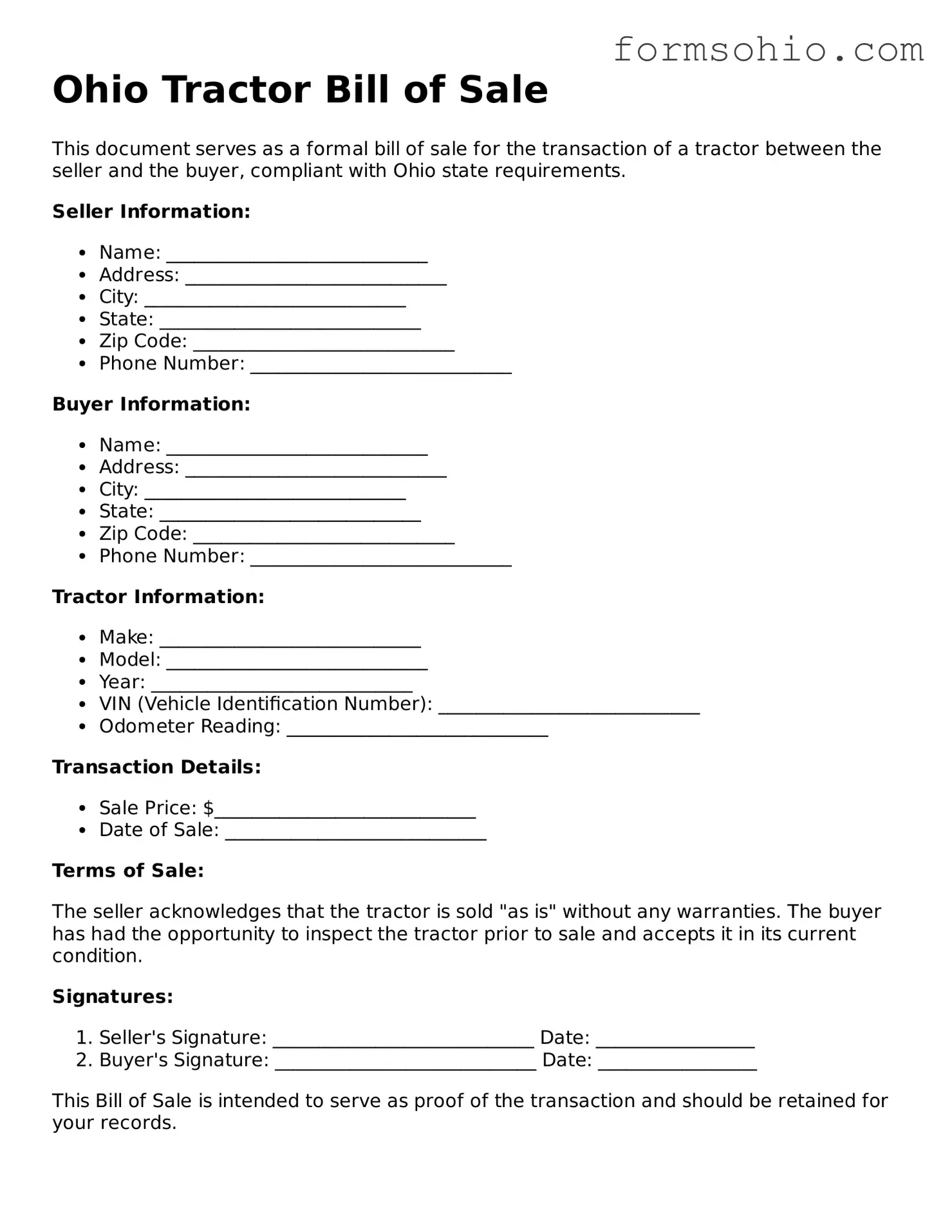Ohio Tractor Bill of Sale
This document serves as a formal bill of sale for the transaction of a tractor between the seller and the buyer, compliant with Ohio state requirements.
Seller Information:
- Name: ____________________________
- Address: ____________________________
- City: ____________________________
- State: ____________________________
- Zip Code: ____________________________
- Phone Number: ____________________________
Buyer Information:
- Name: ____________________________
- Address: ____________________________
- City: ____________________________
- State: ____________________________
- Zip Code: ____________________________
- Phone Number: ____________________________
Tractor Information:
- Make: ____________________________
- Model: ____________________________
- Year: ____________________________
- VIN (Vehicle Identification Number): ____________________________
- Odometer Reading: ____________________________
Transaction Details:
- Sale Price: $____________________________
- Date of Sale: ____________________________
Terms of Sale:
The seller acknowledges that the tractor is sold "as is" without any warranties. The buyer has had the opportunity to inspect the tractor prior to sale and accepts it in its current condition.
Signatures:
- Seller's Signature: ____________________________ Date: _________________
- Buyer's Signature: ____________________________ Date: _________________
This Bill of Sale is intended to serve as proof of the transaction and should be retained for your records.
